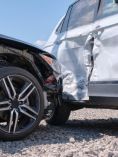Crash Avoidance Technologies

Depending on how old you are, you might remember when airbags were the latest advance in automobile safety. They were optional back then, but now they are standard in most cars. 21st century tech has given us many more automobile safety advances, most of which help us avoid accidents, like backup cameras.
In recent years, safety features have evolved and are now called "crash avoidance technologies." Some of these are alerts designed to draw your attention to a situation that could cause an accident; others will take action for you. Here's a list of the most common crash avoidance technologies from Consumer Reports:
Adaptive Cruise Control
Helps keep your car at a safe distance from the car in front of you when you are using cruise control so you don't have to brake.
Automatic Emergency Braking
This feature involves a sensor that can tell when you should stop to avoid an accident. If you don't stop in time, the brakes will be applied for you.
Blind Spot Warning
This alerts you if there's a vehicle in your blind spot, particularly if you use your turn signal to change lanes.
Collision Warning/Avoidance
This feature, sometimes known as Forward Collision Warning, alerts you if you are about to hit a person or an object. Collision Avoidance systems alert you and apply the brakes if you don't do it in time.
Lane Departure Warnings/Lane Keep Assist
Lane Departure Warning (LDW) is a feature that notifies you if you "accidentally" change lanes, which usually happens if something inside the vehicle distracts you. Lane Keep takes it one step further by steering you back into your lane or applying brakes.
Rear Cross Traffic Warning
Alerts you if something is behind you or about to be behind you when you are backing up.
Whether or not any of these crash avoidance technologies will become standard is up to each manufacturer, but if you can afford to get the additional safety features, it may be worth it. In August, the Insurance Institute for Highway Safety published its results from a study about crash avoidance technologies. Researchers used police reports and Vehicle Identification Numbers (VINs) provided by six car manufacturers that include LDW technology as an option, as well as data from states that supplied the VINs of vehicles involved in crashes from 2009 to 2015. They found that LDW technology decreases rates of single-vehicle incidents by 11% and the rate of injury from those crashes by 21%. Using the same data as the LDW study, researchers found that vehicles with blind spot detection lowered the lane change crash rate by 14% and the rate of lane change crashes with injuries by 23%.
If you are considering a different vehicle and want a quick way to see which of these crash avoidance technologies are standard and which are optional on different makes and models, Consumer Reports has created an interactive chart that might help. The naming of each of these technologies might vary from manufacturer to manufacturer, but you should be able to tell which is which.
Share This:-
Defensive Driving Tips
 See How
See HowCrash avoidance tech is certainly helpful, but being a defensive driver should be your first line of defense.
-
Auto Scenarios: What If
 See Details
See DetailsThere are many causes of accidents. See a few of those reasons and find out what your auto insurance may cover.
-
What to Do After an Accident
 See Steps
See StepsEven defensive drivers who are prepared for auto accident scenarios still get in accidents. Here’s what to do afterwards.
